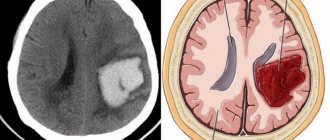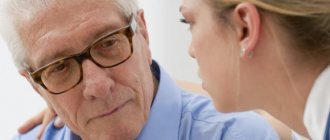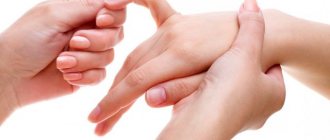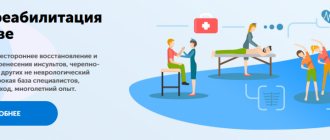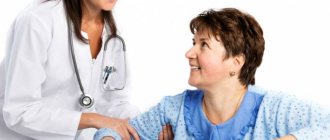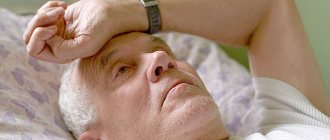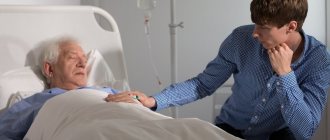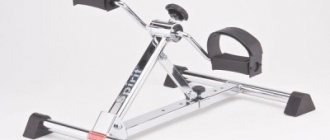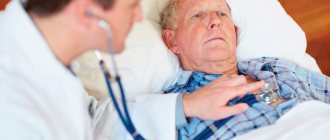A stroke leads to damage to parts of the brain, which is fraught with various consequences: loss of speech and other reflexes, partial paralysis on one side, coma. Therefore, after an illness, a long and complex recovery is necessary, which consists of taking medications, therapeutic exercises, massage, sanatorium treatment, and diet.
The use of massage during rehabilitation after a stroke is one of the important and effective methods of restoring movements.
Among the listed techniques, massage after a stroke deserves special attention.
The benefits of massage after a stroke
Massage after a stroke or myostimulation will return the muscles to their normal state. For the late stage of recovery, the services of a massage therapist are needed. The specialist will be able to conduct sessions taking into account the characteristics and changes of the affected arm or leg. Proper massage will allow you to achieve good results:
- in the body, especially on the damaged side, blood circulation improves, organs receive more nutrients and function better, harmful substances are eliminated from tissues;
- swelling goes away, the person gets rid of excess fluid in the tissues;
15-20 days after the impact, it is necessary to begin a rehabilitation course to eliminate the consequences
- in case of nervous system disorders, massage improves its condition and brings calm;
- the gastrointestinal tract is stimulated, constipation is prevented;
- After a stroke, massage can eliminate muscle spasms and discomfort.
Paralysis of the left side in right-sided strokes and left-sided strokes results in spasms and inability to control the limbs. This causes significant problems for the patient and shows an inability to care for himself.
Restorative massage eliminates discomfort and helps normalize activity. The video demonstrates a course of massages that are performed on a person who has suffered an ischemic stroke and received paralysis of the arm.
Six General Principles of Rehabilitation
- Early start. Start rehabilitation from the first days of hospital stay and continue at home until lost functions are restored.
- Systematicity - constantly and regularly carry out a set of restoration measures. Hard work on yourself and the desire to get better are the keys to effective rehabilitation.
- Sequence - each stage of recovery is intended for a specific category of patients (for severe strokes, start rehabilitation from the first stage, for milder ones - from one of the subsequent ones). It is important to move step by step and in a timely manner to a new stage (after achieving your goals).
- Multidirectionality - restore all lost functions (movement, speech, memory) in parallel, simultaneously within the framework of the rehabilitation stage.
- Use rehabilitation equipment: cane, walker, wheelchair, crutches.
- Supervision by a specialist. No matter how correct rehabilitation at home is, patients after a stroke must be observed by a neurologist and work with a rehabilitation specialist. These specialists will help you choose the right set of rehabilitation measures and monitor their effectiveness.
Massage for stroke: recommendations for implementation
- It is best to perform this procedure before lunch.
- Since the muscles get tired quickly, the massage should not exceed 10 minutes.
Massage after a stroke refers to therapeutic and preventive measures, therefore the course should be started on the recommendation of a doctor
- If the patient shows signs of fatigue: increased heart rate, shortness of breath, pallor, the session should be stopped.
- Over time, the duration of the session can be increased to 30 minutes, which will allow for a better effect on the body.
- Within 30 days a person completes the massage course. After this you need a week's rest.
- After 3 months, the duration of the massage can be an hour.
If the procedures are carried out daily, the positive effect will not linger: movements in the limbs are restored, which is especially important for the paralyzed arm and the entire side. Improving blood circulation and muscle stimulation will allow you to return normal limb mobility. The video shows how to massage the affected side and what you can do to improve blood circulation.
The actions of the massage therapist contribute to the rehabilitation of tissues in the paralyzed area. This is important because muscles that are left without movement weaken. Daily exercise will help you regain your tone and improve your health. If it is not possible to hire a specialist, you should purchase a special massager. The technical device must be used in accordance with the program developed by the doctor. Over time, the massage technique changes as the patient recovers.
Therapeutic type of massage
After a stroke, treatment with massages begins. The specialist will select the right treatment program.
Therapeutic massage after a stroke should be performed by a specialist
In the post-stroke period, you should know the principles of this procedure:
- The patient must be in the correct position on a horizontal elastic surface.
- Massage movements are carried out from the top to the lower limbs.
- During the procedure, the neck should be treated.
- Massage the arms, legs and back is done from the center to the edges to avoid sudden pressure surges.
- The procedure is carried out easily and superficially, without deep muscle warm-up.
Active load
Gymnastics after a stroke is performed subject to a certain sequence. The first stages are training in a lying and sitting position. The final stage is loads in a standing position. Exercise therapy is prescribed by a qualified specialist who determines the duration, intensity and number of repetitions of the exercises.
Lying down
For the upper extremities, exercises include slowly clenching your fingers into a fist, moving your hands in a circular motion, bending your elbows, and raising your arms in a circular motion. In order to return functions to the legs, flexion of the toes, circular movements of the foot, bending of the limbs at the knees with subsequent straightening are performed.
In a sitting position
1-1.5 months after the start of the rehabilitation period, the patient is prescribed exercises that need to be performed in a sitting position. These include:
- circular movements of the head, turns, bends;
- sitting on a stool;
- slowly arching the back and lifting the affected leg.
During this period, an important point is to perform exercises after a stroke for the arms with the development of the hands and fingers. For this purpose, toys are used that develop fine motor skills.
Restorative massage at home
Immediately after a stroke, the patient can undergo a very light massage at home for some time. To do this, you don’t have to call a professional, since you can do everything yourself for the first 20 days. The procedure consists of a light massage. You should not resort to strain or intense rubbing, since the patient has not yet recovered and an increase in pressure will not have the best effect on health.
Before you start a massage at home, you should make sure that you have warm hands. First, all exercises are carried out on a healthy limb, then proceed to massage the whole body. Light stroking and rubbing are allowed during the process, as shown in the video.
More time should be spent flexing and straightening the limbs so that the joints receive stress and do not atrophy. This will also avoid salt deposits. The massage begins with the lower limb so that the sensitivity threshold can be determined. It is not always convenient to hire a specialist at home, so it is better to learn how to do massage movements yourself or purchase a massager.
Depending on the affected side, it is recommended to do massage rubbing less intensely. It should be remembered that a healthy limb can withstand a greater load than a diseased one. Spasms can occur from any pain, so when performing procedures yourself, at home, you should be very careful.
Lower limb massage
To reduce the excitability of spinal cord cells, you should rub the areas near the spine. Only then can you begin to warm up your paralyzed leg. First the thigh is massaged. For this, the patient is placed on his back. Begin the session with the healthy leg. After a stroke, the load should be minimal, but over time it can be increased.
Massage is used as a preparatory stage, as well as an integral aid after a stroke
A healthy leg should be toned with rubbing movements. Next, move on to flexion and extension of the knee joint. After this, you need to lightly stroke from the knee to the groin. After a couple of minutes, zigzag movements begin. This should relax the muscles. Rubbing should be done only with fingertips without using force. It is also necessary to massage the shin. It should be remembered that the muscles are stretched, which requires more intense movements and tempo. The procedure is carried out using pressure and acupressure, gradually moving on to gentle, light stroking. The procedure is carried out from the heel to the knee.
Massaging the foot is quite difficult. Gentle movements in the form of spirals should be carried out on both the upper and lower parts. The procedure is carried out from the toes to the heel.
Separately, you need to stretch each finger and check its bending. During the massage, one hand should fix the foot, and the other should perform the exercises. The video shows how the massage is performed.
Time for massage
It is better to perform a massage immediately after hygiene procedures. Initially, each massage technique is repeated 4 times. Then, after a couple of weeks, you can increase the load. Gradually the intensity will increase from stroking to rubbing. Also, the duration of each session will be adjusted depending on the patient’s performance. If muscle tone appears, the massage should be more intense in this area.
Among other things, it is necessary to make separate movements aimed at preventing the formation of bedsores. For this patient they try to “knead”. Lay on your back, turn over on your side. They bend the limbs in all joints, breaking up salt deposits. Over time, rehabilitation will produce results and the person will be able to regain mobility.
Originally posted 2014-10-25 20:20:56.
Passive load
After the patient regains consciousness, passive gymnastics is prescribed. During the early stages of rehabilitation, position correction is carried out. The affected muscle fibers with increased tone are affected by light stroking. The remaining muscles are stimulated by deep massage techniques, which include kneading and rubbing.
Physical therapy after a stroke in bedridden patients is carried out with extreme caution. With low mobility, exercises begin with large articular joints. In the absence of changes in muscle tone and other pathological changes, exercises are performed on the distal limbs.
Mental gymnastics are used to restore muscle memory. For this purpose, mental gymnastics are carried out, which must be voiced.
Paralysis in most cases is accompanied by speech disorders. It is important to perform exercises that are aimed at improving articulation. To more quickly restore lost functions, it is recommended to talk with the patient more often, voicing your and his actions.
Passive gymnastics should be performed in 2-3 sets of 15-20 repetitions. During this, you need to monitor the patient’s breathing, the appearance of possible pain or increased muscle tone.
